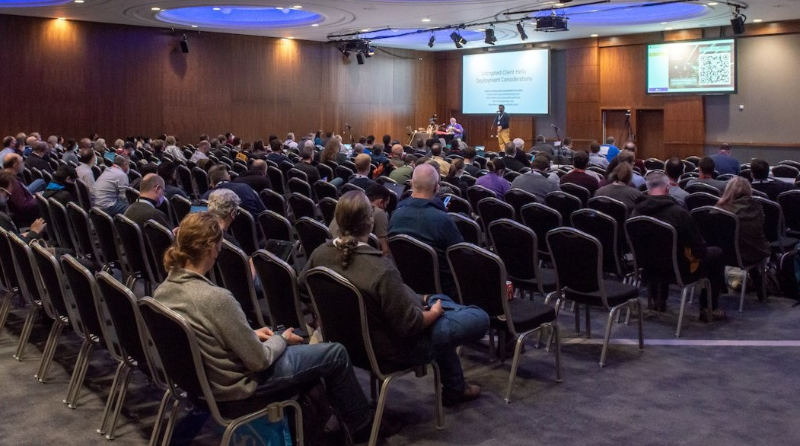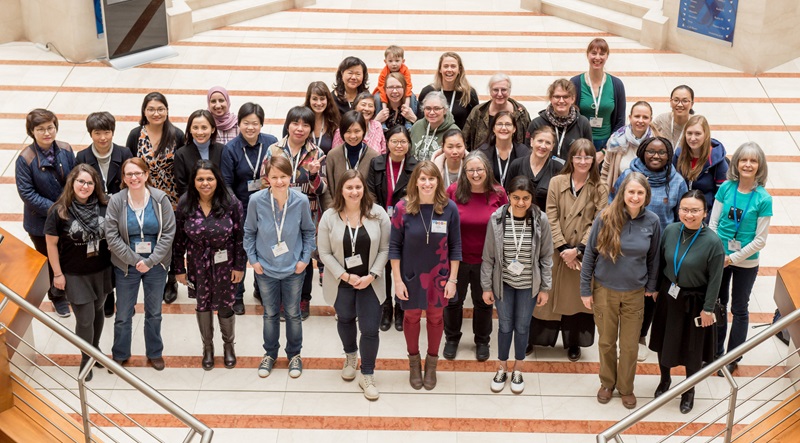The Internet Engineering Task Force (IETF) and the Internet Architecture Board (IAB) recently unveiled their new leadership teams, a significant development in the realm of internet governance. Both IETF and IAB are key organizations responsible for the development and promotion of voluntary internet standards. The IETF focuses on the evolution of the internet architecture and the smooth operation of the internet, while IAB provides overarching architectural oversight for internet protocol suite and procedure protocols.
The newly announced leadership teams will bring fresh perspectives and innovative approaches to address the complex challenges of internet governance. The IETF’s new leadership team, composed of industry experts from diverse backgrounds, will guide and oversee the development of internet standards. The team will focus on ensuring that the internet remains a reliable, efficient, and robust platform for communication and innovation. They will work towards the enhancement of the internet’s technical quality, making it more accessible and user-friendly.
Meanwhile, the IAB’s new leadership team comprises seasoned professionals with extensive experience in the field of internet architecture and protocols. Their primary role will be to monitor and guide the evolution of the internet’s architecture, ensuring it continues to serve as a robust, secure, and reliable platform that can cater to the ever-evolving needs of users worldwide. They will also provide advice to the IETF on various matters related to the internet’s architecture and will be involved in liaising with other internet-related bodies.
The change in leadership is a pivotal moment in the history of these organizations, as it marks a new era of dynamic and progressive leadership. The new leaders carry the responsibility of steering these organizations through the complexities of the digital age, as the internet continues to grow and evolve at an unprecedented pace. The challenges are immense, ranging from maintaining the internet’s resilience in the face of growing cybersecurity threats to ensuring its accessibility and inclusivity for all users.
However, the new leadership teams bring with them a wealth of expertise and experience, and there is a collective sense of optimism that they are well-equipped to meet these challenges head-on. There is a shared belief that their vision and leadership will help enhance the internet’s robustness, reliability, and reach, paving the way for an even more interconnected and digitally inclusive world.
This leadership change also highlights the commitment of the IETF and IAB to continually adapt and evolve in response to the rapidly changing digital landscape. It underscores their steadfast commitment to their mission of making the internet work better by producing high-quality, relevant technical documents that influence people, companies, and governments to design, use, and manage the internet effectively.
In conclusion, the appointment of the new leadership teams at the IETF and IAB is a significant milestone in the world of internet governance. It brings renewed vigor and a fresh direction to these organizations, as they navigate the complex and rapidly evolving landscape of the internet. It is expected that under their leadership, both organizations will continue to play a crucial role in shaping the future of the internet, ensuring it remains a secure, accessible, and reliable platform for all.

Meet the New Leaders of the IETF
The Internet Engineering Task Force (IETF) has recently undergone a leadership transformation, ushering in a new era of internet advancement and standardization. This esteemed body, responsible for the development and promotion of internet standards, welcomes its new leaders who are set to guide and influence the future of internet technology. The IETF’s new leaders come equipped with a wealth of experience, innovation, and vision, collectively dedicated to maintaining the IETF’s role as the world’s primary internet standards organization.
The new leadership team, spearheaded by Alissa Cooper, the first woman to hold the position of IETF Chair, has a challenging task ahead. They are entrusted with the job of ensuring that the internet remains a space that fosters innovation, collaboration, and global connection. Each new leader brings a unique perspective and set of skills to the diverse team. They are all highly respected individuals in their respective fields and have made significant contributions to internet technology.
The new leaders are tasked with navigating the complexities of an ever-evolving digital landscape. They will be addressing issues such as net neutrality, data privacy, and cybersecurity, while also developing strategies to accommodate the rapid growth of the internet and the increasingly diverse needs of its global users. They will be leading the charge in ensuring the internet remains open, interoperable, and user-centric.
The IETF’s new leaders are a reflection of the organization’s commitment to diversity and inclusion, with a particular emphasis on strengthening the representation of women and underrepresented groups in leadership positions. Their appointment is a significant step forward in building a more inclusive and diverse internet, reflective of the global community it serves.
The introduction of these new leaders signifies an exciting chapter for the IETF and the broader internet community. Their leadership will undoubtedly shape the future direction of internet standards, fostering an environment that supports innovation, collaboration, and the continued growth of the internet as a global resource.
Overview of the Internet Engineering Task Force
The Internet Engineering Task Force (IETF) is a large, open, international community of network designers, operators, vendors, and researchers concerned with the evolution of the Internet architecture and the smooth operation of the Internet. It is open to any interested individual and its primary function is to develop and promote voluntary Internet standards, particularly the standards that comprise the Internet protocol suite (TCP/IP).
The IETF has a unique structure that is neither a corporation nor a government agency. It is organized into a number of working groups, each focused on a specific topic such as routing, transport, security, or applications. These working groups are managed by Area Directors, who together form the Internet Engineering Steering Group (IESG). The IESG is responsible for technical management of IETF activities and the Internet standards process. The IETF’s work is supported by the Internet Society (ISOC), a non-profit organization dedicated to providing leadership in Internet-related standards, education, and policy.
The IETF strives to make the Internet work better by producing high-quality, relevant technical documents that influence the way people design, use, and manage the Internet. The output of the IETF’s process is a series of documents known as RFCs (Requests for Comments), which describe methods, behaviors, research, or innovations applicable to the working of the Internet and Internet-connected systems. While the IETF does not enforce adherence to these standards, the utility and wide-spread use of these voluntary standards have significantly enhanced the functionality, interoperability, and growth of the Internet. The IETF’s open, consensus-driven approach ensures the Internet continues to evolve in a manner that benefits all stakeholders.

How the New Leadership Will Impact Internet Standards
The advent of new leadership often leads to significant shifts in various sectors, including the internet. As such, an incoming leadership can have far-reaching effects on internet standards, especially in relation to accessibility, privacy, net neutrality, and cybersecurity. New leadership may prioritize enhancing digital infrastructure to ensure more widespread internet access. This could mean establishing standards that promote the development of rural broadband or low-cost internet services, thereby making the internet more accessible to disadvantaged communities.
On the issue of privacy, new leadership may enforce stricter standards to protect users’ personal data from unauthorized access and misuse. This could involve implementing policies that require internet service providers and tech companies to adopt more robust data protection measures. Similarly, in a bid to uphold the principle of net neutrality, new leaders may introduce standards that prevent internet service providers from discriminating against certain types of content or services. They might also work towards bolstering cybersecurity by setting standards that mandate stronger security protocols and practices in the digital space.
In addition, the new leadership may seek to foster innovation and competition in the tech industry by setting standards that prevent monopolistic practices. They could advocate for open internet standards that promote interoperability and compatibility among different internet technologies and platforms. Furthermore, the new leadership might also focus on enhancing digital literacy and promoting ethical internet use, potentially leading to the establishment of standards that foster a more inclusive and responsible digital culture.
Overall, the impact of new leadership on internet standards can be far-reaching and multifaceted, touching on issues of accessibility, privacy, net neutrality, cybersecurity, competition, and digital literacy. However, the specific nature and extent of this impact would largely depend on the priorities, values, and strategies of the incoming leaders. It’s crucial then for stakeholders to engage actively with new leadership to ensure that the evolving internet standards align with their needs and concerns.
Key Changes and Updates in Leadership
In recent years, there has been a significant shift in the landscape of leadership, with many key changes and updates taking place. The traditional autocratic model, where leaders dictate and control all decisions, is becoming outdated. Instead, a more democratic style of leadership is emerging, where leaders actively invite input and participation from their team members, fostering a culture of inclusivity and collaboration.
Technological advancements, globalization, and a growing emphasis on diversity and inclusion have all played a part in reshaping the leadership paradigm. Today’s leaders are expected to be more agile and adaptable, ready to navigate the fast-paced, ever-changing business environment. They are required to be forward-thinking, able to anticipate and respond to changes swiftly and effectively.
Moreover, emotional intelligence has gained prominence as a critical leadership skill. Leaders are now expected to demonstrate empathy, self-awareness, and the ability to manage emotions — both their own and their team’s. This aids in building stronger relationships, enhancing team morale, and ultimately driving better performance.
Another significant change is the increasing importance of ethical leadership. Leaders are not only expected to ensure financial success for their organization, but also to uphold high ethical standards and serve as role models for their teams. This shift towards ethical leadership has been driven by various factors, such as increased public scrutiny of corporate behavior and a growing awareness of the social and environmental impacts of business operations.
In conclusion, leadership has undergone significant changes and updates, moving away from the traditional autocratic model towards a more democratic, inclusive, emotionally intelligent, and ethically conscious approach. These changes reflect the evolving business landscape and societal norms, and are crucial in enabling leaders to effectively navigate the challenges of the modern business world.

Future Goals and Priorities of the New Teams
As businesses evolve, the creation of new teams is a common occurrence designed to foster innovation, enhance productivity, and drive success. The future goals and priorities of these new teams must be well-defined and aligned with the overall business objectives. As a starting point, the teams should prioritize establishing trust and open communication within the group.
The ability to freely communicate ideas, concerns, and feedback fost good teamwork and encourages collaboration. Another significant goal should be to develop a shared vision. This unites the team members and focuses their efforts towards a common objective.
In terms of performance, setting clear S.M.A.R.T (Specific, Measurable, Achievable, Relevant, Time-bound) goals should be a priority. This helps the team members understand their roles and expectations, and it allows for the measurement and evaluation of their progress. Along with these performance goals, new teams should prioritize continuous learning. The business environment is constantly changing, and teams need to adapt to these changes. By prioritizing learning and development, teams can stay ahead of the curve, solve problems more efficiently, and innovate more effectively.
Moreover, the teams should aim to build a healthy and supportive work culture. This not only improves employee satisfaction and retention but also boosts overall team performance. Prioritizing work-life balance, diversity, inclusivity, and employee well-being can contribute to a positive work culture.
Finally, future goals should also include efforts towards social responsibility. Beyond profit-making, new teams should also focus on making a positive impact on society and the environment. This can be achieved through sustainable practices, ethical conduct, and community outreach efforts.
In conclusion, the future goals and priorities of new teams must be multifaceted, encompassing performance, learning, work culture, and social responsibility. These goals and priorities should not only drive the team’s success but also contribute to the larger organizational and societal good.
